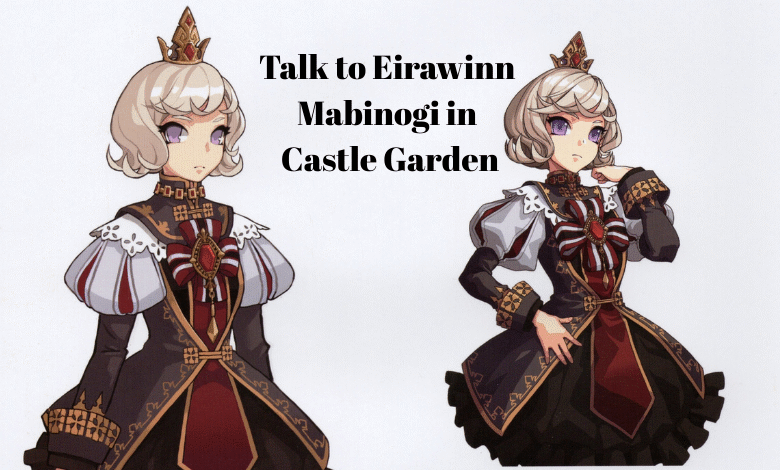Talk to Eirawinn Mabinogi in Castle Garden: The Complete Guide

In the expansive fantasy world of Mabinogi, an MMORPG developed by devCAT and published by Nexon, players encounter a rich tapestry of lore, characters, and hidden quests. Among these is the unique opportunity to talk to Eirawinn in the Castle Garden, a moment that connects players to both narrative depth and progression rewards. Whether you’re on a questline or exploring the area, understanding how and why to interact with Eirawinn is essential for advancing your gameplay.
Eirawinn, a notable NPC in Mabinogi, is closely tied to the Avon Theater Missions, Generation quests, and specific castle-related events. Her presence in the Castle Garden, an area that exudes regality and mystery, is not only part of the visual beauty of the game but also of its quest-driven immersion.
Who Is Eirawinn in Mabinogi?
Eirawinn is a high-ranking noblewoman and often associated with Emain Macha Castle, though her presence in the Castle Garden introduces a more personal dimension to her character. She plays a role in the Generation 16: Macbeth storyline and may also appear in certain event quests or when summoned through specific cutscenes.
Key Details about Eirawinn:
-
Race: Human
-
Role: Support NPC tied to noble and royal affairs
-
Affiliations: Castle factions, main storyline arcs
-
Known For: Calm demeanor, insight into political and magical intricacies
Engaging with Eirawinn often leads to critical lore drops, character development revelations, and sometimes access to otherwise locked mechanics or rewards.
How to Find the Castle Garden in Mabinogi
To talk to Eirawinn in Castle Garden, players must first locate the Castle Garden itself. This area is typically connected to one of the major castles, such as those in Taillteann, Tara, or Emain Macha.
Accessing the Castle Garden:
-
Fast Travel to the Castle Area: Use the Moon Gates or Continent Warp feature to reach Emain Macha, Tara, or Taillteann, depending on the quest or event tied to Eirawinn.
-
Enter the Castle Proper: Some castle areas may require entry permissions based on guild ownership or event status.
-
Locate the Garden Entrance: The Castle Garden is typically accessed through the rear courtyard or a side corridor of the castle.
-
Explore the Garden Area: Once inside, you’ll find decorative hedges, fountains, and marble walkways—a setting fit for someone of Eirawinn’s nobility.
Tip: If you are on a specific quest like “Tragedy of the Knight” or “Royal Banquet Prelude,” a quest marker may help guide you directly to her location within the garden.
Talking to Eirawinn – Step-by-Step Interaction Guide
Once you reach the Castle Garden, approaching Eirawinn and initiating dialogue can vary depending on the quest or situation.
Step 1: Confirm Quest Requirements
Ensure you have the correct quest active. Many players become confused when Eirawinn is not interactable—it is often because the storyline hasn’t progressed to the necessary stage.
Step 2: Locate Eirawinn’s Position
She typically stands near:
-
The central fountain
-
A marble bench under a rose arch
-
Close to a statue of Morrighan or the Goddess of Light
Her location may shift slightly depending on server phase or quest trigger.
Step 3: Initiate Dialogue
Click directly on Eirawinn and select “Talk”. In some quests, you’ll be prompted with a dialogue tree, offering:
-
Background lore
-
Instructions or tasks
-
Emotional or narrative-driven responses
Step 4: Accept or Progress the Quest
If you’re in the middle of a mission, talking to her may unlock the next cutscene, battle mission, or item reward. Be sure to check your Quest Log and Inventory afterward.
Common Quests Involving Eirawinn in Castle Garden
1. Generation 16: The Next Shakespeare Play – Macbeth
This Generation heavily features royal intrigue, and Eirawinn acts as both a political figure and spiritual guide. She offers emotional commentary on Macbeth’s descent and provides the player with essential direction.
2. Avon Questlines
While not directly in the Avon Theater, Eirawinn ties into it via side quests that explain the noble reactions to Avon performances and the mystical underpinnings of the scripts.
3. Royal Castle Banquet Events
During seasonal events or anniversary celebrations, Eirawinn often appears in the garden to greet players, deliver event invitations, or award cosmetic items.
Rewards and Benefits of Speaking to Eirawinn
Interacting with Eirawinn may offer the following benefits depending on the context:
-
Experience Points for quest progression
-
Story-relevant items such as manuscripts or magic-infused artifacts
-
Access to hidden missions like “Night of the Falling Stars”
-
Reputation increases with castle factions
-
Exclusive cutscene dialogue revealing key lore
-
Occasionally, limited-time costumes or accessories
Troubleshooting: Why Can’t I Talk to Eirawinn?
1. Quest Not Active
Ensure you have accepted the right quest from the Quest Board, Letter Box, or NPC initiator.
2. Instance Phase Conflict
In rare cases, the game instance phase may prevent Eirawinn from appearing. Relogging or moving channels can fix this.
3. Guild Ownership Restriction
If the castle is owned by a player guild, access to the garden may be blocked during siege events or ownership transitions.
4. Dialogue Bug
Use the /reloadui command or restart the game client to resolve stuck dialogue windows.
Visual and Emotional Impact of Castle Garden Conversations
One of the most understated yet powerful elements in Mabinogi is the emotional resonance of NPC interactions. Speaking to Eirawinn in the serene garden setting often evokes a sense of calm, reflection, and historical grandeur. The lush garden visuals, the soft orchestral background music, and Eirawinn’s graceful presence make for a uniquely immersive moment.
These conversations are not merely information dumps they anchor the player emotionally in Mabinogi’s deeply layered narrative world.
Conclusion: A Moment of Quiet Power in Mabinogi’s Lore
To talk to Eirawinn in the Castle Garden is to experience one of Mabinogi’s more refined and intimate storytelling techniques. It is not about flashy battles or item grinding it’s about lore, character development, and narrative pacing. For both new players and seasoned veterans, visiting this quiet corner of the world and engaging with one of its noblest NPCs remains a memorable and rewarding experience.



